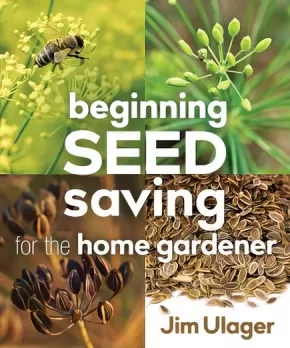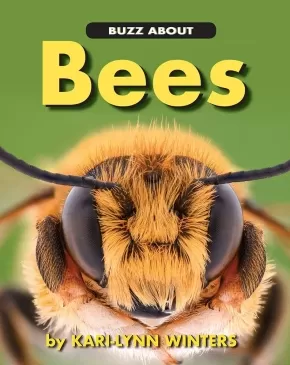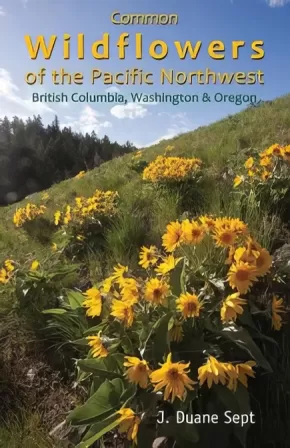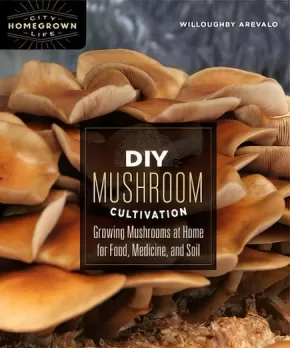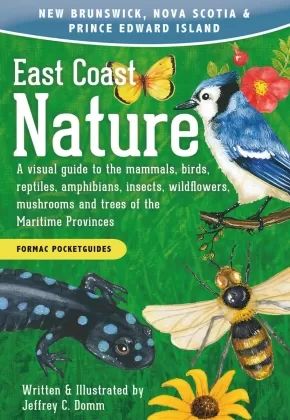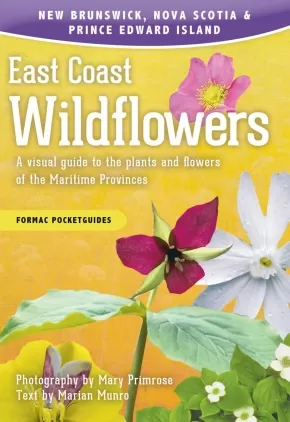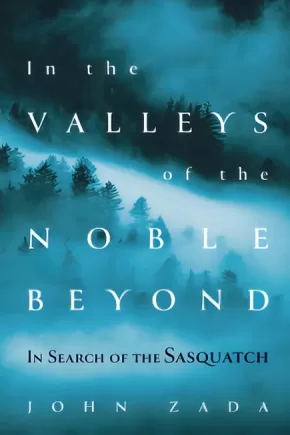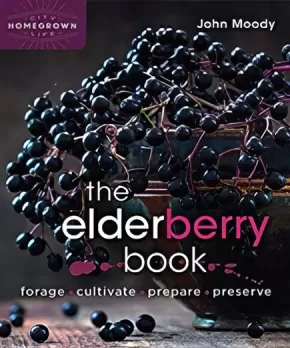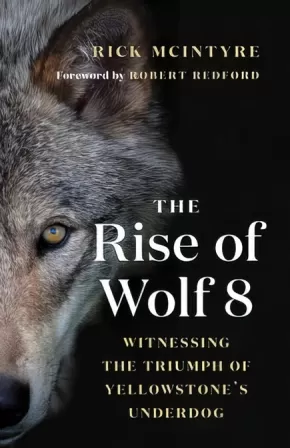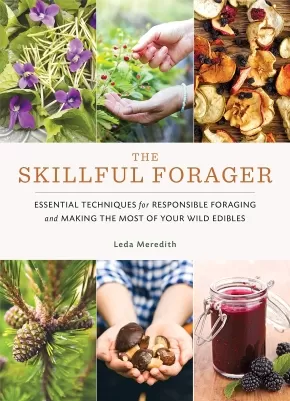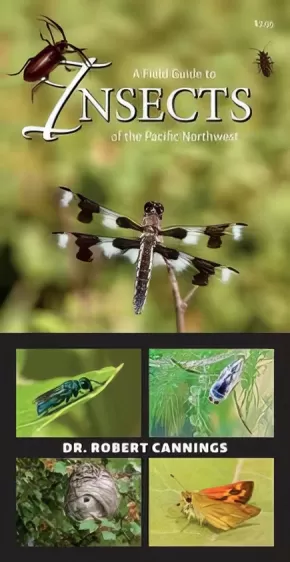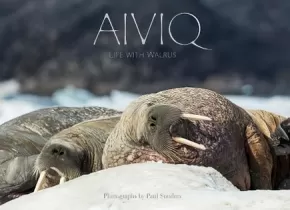Plants and Animals
Synopsis:
How home gardeners with little time or space can reclaim the joy and independence of seed saving.
Many home gardeners refuse to eat a grocery store tomato, but routinely obtain seeds commercially, sometimes from thousands of miles away. And while seed saving can appear mysterious and intimidating, even home gardeners with limited time and space can experience the joy and independence it brings, freeing them from industry and the annual commercial seed order.
Beginning Seed Saving for the Home Gardener explores how seed saving is not only easier than we think, but that it is essential for vibrant, independent, and bountiful gardens. Coverage includes:
- Why seed saving belongs in the home garden
- Principles of vegetative and sexual reproduction
- Easy inbreeding plants, including legumes, lettuce, tomatoes, and peppers
- Plants with a few more challenges, including squash, spinach, onions, and parsley
- Brief discussion of more difficult crops, including corn, carrots, and cabbage.
Written by a home seed saver for the home seed saver, Beginning Seed Saving for the Home Gardener is a comprehensive guide for those who want to reclaim our seed heritage, highlighting the importance of saving seeds for you, your neighbors, and most importantly, subsequent generations.
Additional Information
96 pages | 7.50" x 9.00" | 58 illustrations
Synopsis:
Imagine a world without bees. Not only would it be less colourful - with fewer wildflowers and flowering plants - it would be less fruitful as well. A world without bees would mean a world where the food supply would be significantly diminished. Global bee researcher Laurence Packer estimates that bees are responsible for 1/3 of our food supply.
Buzz About Bees is the latest addition to the series that includes Lowdown on Earthworms and follows the same formula offering an in-depth look at an endangered and vital part of the natural world.
Accompanying information about the history, social structure and science behind the world of bees and honey are conservation activities to make the world a place where hives of bees can thrive.
Reviews
"Buzz About Bees is a great overview of all things apiarian. Pick up this book and it engages you with a true/false quiz about what you and your students may or may not know about bees. […] If you can navigate the BEE-wildering array of apiarian puns, this is a great introduction to all things bees." — NSTA
"With punny titles such as 'UnBEE-lievable Body Parts' and 'Let Me BEE: I'm BUZZ-y Working', Buzz About Bees takes an upbeat, yet serious, approach to its topic... Absorbing, cheerful, and easy to read." Recommended. — CM Magazine
Educator Information
Recommended ages: 7 to 10.
Additional Information
32 pages | 8.00" x 10.00" | Paperback
Synopsis:
Wildflowers are all around us!
Whether on a hike, in the backyard or in the living room, readers will be inspired by the stunning photography and informative text in this new guidebook.
The guide includes more than 130 wildflower species, arranged by family so readers can find and identify similar species nearby. A concise color guide to wildflowers features photos arranged by flower color so readers can quickly find and identify species.
For each floral gem, biologist and photographer Duane Sept provides a striking full-color photograph, along with a clear description. Notes on habitat, natural history and similar species are included, along with a clear glossary of terms.
Attractive enough to keep on your coffee table, and small enough to travel with you on long or short hikes, this guide will enhance your appreciation of the magnificent wildflowers of the Pacific Northwest.
Additional Information
96 pages | 5.50" x 8.50"
Synopsis:
Bring mushrooms into your life as you dive into the practice of home-scale mushroom cultivation.
With applications in permaculture, urban farming, cooking, natural medicine, and the arts, interest in home-scale mushroom cultivation is exploding. Yet many beginners remain daunted by the perceived complexity of working with fungi.
DIY Mushroom Cultivation is the remedy, presenting proven, reliable, low-cost techniques for home-scale cultivation that eliminate the need for a clean-air lab space to grow various mushrooms and their mycelium.
Beautiful full-color photos and step-by-step instructions accompany a foundation of mushroom biology and ecology to support a holistic understanding of the practice. Growing techniques are applicable year-round, for any space from house to apartment, and for any climate, budget, or goal. Techniques include:
- Setting up a home growing space
- Inexpensive, simple DIY equipment
- Culture creation from mushroom tissue or spores
- Growing and using liquid cultures and grain spawn
- Growing mushrooms on waste streams
- Indoor fruiting
- Outdoor mushroom gardens and logs
- Harvesting, processing, tinctures, and cooking.
Whether you hunt mushrooms or dream about growing and working with them but feel constrained by a small living space, DIY Mushroom Cultivation is the ideal guide for getting started in the fascinating and delicious world of fungiculture.
Series Information
This book is part of the Homegrown City Life Series:
You’d like to be self-sufficient, but the space you have available is tighter than your budget. If this sounds familiar, the Homegrown City Life series was created just for you! Authors of this series will help you navigate the wide world of homesteading, regardless of how big (or small!) your space and budget may be. Topics range from cheesemaking to gardening and composting—everything the budding urban homesteader needs to succeed!
Increase your self-reliance:
- Take back DIY skills
- Work with the space you have, apartment balcony or suburban backyard
- Learn about fermenting, crafting, growing, preserving, and other skills for the urban homesteader.
Additional Information
208 pages | 7.50" x 9.00"
Synopsis:
This concise pocketguide helps you discover and identify the most common plants and animals in Canada's Maritime provinces. Compiled by species and type, this guide makes it easy to find information on our natural heritage.
Features include:
- Full-colour illustrations
- Detailed information and descriptions
- Visual guide for size
- Symbols and legend.
Additional information
128 pages | 5.51" x 8.03" | 100+ Colour Illustrations
Synopsis:
This beautiful pocket guide helps you learn about and identify many common and rare wildflowers in Canada's Maritime provinces.
Features include:
- Full-colour photographs
- Detailed information and descriptions
- Organized by season
- Grouped by colour for quick identification.
Additional information
96 pages | 5.51" x 8.03" | 80+ Colour Photographs
Synopsis:
This evocative work of nature writing traverses the world’s largest temperate rainforest to uncover the legend of the Sasquatch.
Canada’s Great Bear Rainforest is home to trees as tall as skyscrapers and moss as thick as carpet. According to the people who live there, another giant may dwell in these woods. For centuries, locals have reported encounters with the Sasquatch—a species of hairy man-ape that could inhabit this pristine wilderness. Driven by his childhood obsession with the Sasquatch, but remaining skeptical, journalist John Zada seeks out the people and stories surrounding this enigmatic creature. He speaks with local Indigenous peoples and a Sasquatch-studying scientist. He hikes with a former bear hunter. Soon, he finds himself on quest for something infinitely more complex, cutting across questions of human perception, scientific inquiry, Indigenous traditions, the environment, and the power of the human imagination to believe in—or to outright dismiss—one of nature’s last great mysteries.
Reviews
"Totally gripping and unputdownable. Destined to be a classic of adventure" - Jason Webster, author of A Death in Valencia
"A captivating tale of the search for a mythical creature, In the Valleys of the Noble Beyond is also a story about us - and our enduring desire to believe in something big, really big, that is out there lurking." - Harley Rustad, author of Big Lonely Doug
Additional Information
336 pages | 6.00" x 9.00"
Synopsis:
A stunning new voice in nature writing makes an epic journey along the Yukon River to give us the stories of its people and its protagonist--the king salmon, or the Chinook--and the deepening threat to a singular way of life, in a lyrical, evocative and captivating narrative.
The Yukon River is 3,190 kilometres long, flowing northwest from British Columbia through the Yukon Territory and Alaska to the Bering Sea. Every summer, millions of salmon migrate the distance of this river to their spawning ground, where they go to breed and then die. The Chinook is the most highly prized among the five species of Pacific salmon for its large size and rich, healthy oils. It has long since formed the lifeblood of the economy and culture along the Yukon--there are few communities that have been so reliant on a single source. Now, as the region contends with the effects of a globalized economy, climate change, fishing quotas and the general drift towards urban life, the health and numbers of the Chinook are in question, as is the fate of the communities that depend on them.
Travelling in a canoe along the Yukon River with the migrating salmon, a three-month journey through untrammeled wilderness, Adam Weymouth traces the profound interconnectedness of the people and the Chinook through searing portraits of the individuals he encounters. He offers a powerful, nuanced glimpse into the erosion of indigenous culture, and into our ever-complicated relationship with the natural world. Weaving in the history of the salmon run and their mysterious life cycle, Kings of the Yukon is extraordinary adventure and nature writing and social history at its most compelling.
Awards
- 2019 Lonely Planet Adventure Travel Book of the Year Winner
- 2018 Sunday Times/Peters Fraser + Dunlop Young Writer of the Year Award
Reviews
“Travel writing? Climate change? Here’s a book that does it all . . . He writes like Annie Dillard, Bruce Chatwin and Jack London combined: suspenseful and sensitive storytelling and sumptuous descriptions.” —National Observer
“Shift over, Pierre Berton and Farley Mowat. You, too, Robert Service. Set another place at the table for Adam Weymouth, who writes as powerfully and poetically about the Far North as any of the greats who went before him.” —Roy MacGregor, author of Original Highways: Travelling the Great Rivers of Canada
“A moving, masterful portrait of a river, the people who live on its banks, and the salmon that connect their lives to the land. It is at once travelogue, natural history, and a meditation on the sort of wildness of which we are intrinsically a part. Adam Weymouth deftly illuminates the symbiosis between humans and the natural world—a relationship so ancient, complex, and mysterious that it just might save us.” —Kate Harris, author of Lands of Lost Borders: Out of Bounds on the Silk Road
“I thoroughly enjoyed traveling the length of the Yukon River with Adam Weymouth, discovering the essential connection between the salmon and the people who rely upon them. What a joy it is to be immersed in such a remote and wondrous landscape, and what a pleasure to be in the hands of such a gifted narrator.” —Nate Blakeslee, author of The Wolf: A True Story of Survival and Obsession in the West
“Beautiful, restrained, uncompromising. The narrative pulls you eagerly downstream roaring, chuckling and shimmering just like the mighty Yukon itself.” —Ben Rawlence, author of City of Thorns
“An enthralling account of a literary and scientific quest. Adam Weymouth vividly conveys the raw grandeur and deep silences of the Yukon landscape, and endows his subject, the river’s King Salmon, with a melancholy nobility.” —Luke Jennings, author of Atlantic and Codename Villanelle
“Adam Weymouth's account of his canoe trip down the Yukon River is both stirring and heartbreaking. He ably describes a world that seems alternately untouched by human beings and teetering at the brink of ruin.” —David Owen, author of Where the Water Goes
Additional Information
288 pages | 5.18" x 8.00"
Synopsis:
Your go-to guide for everything from cultivation to wine-making with one of humanity's oldest plant friends
Once a staple in homes across the world, and found along every highland, highway, and hedgerow, the forgotten elderberry is making a comeback. Its popularity as medicine is surging, its choice as an edible landscaping plant is growing, and its use for wine-making and crafts is being rediscovered.
Spanning history and geography, The Elderberry Book takes you on an adventure, deepening your appreciation of a plant that has played a crucial role across the world for thousands of years. Through this fun, inspirational, and educational resource, discover:
- Elderberry's amazing history
- Cultivating and foraging, from the balcony to the backyard
- Various traditional food and medicine preparations
- Simple wine-making techniques
- Traditional crafts and tools.
This is the definitive guide to the many uses of elderberry; no matter where you are, one of humankind's oldest plant friends can provide you with anything from syrup to wine to dyes, and more.
This book will be of interest to homesteaders, gardeners, herbalists, and people interested in folk history and crafts.
Educator & Series Information
Elderberries trees are widespread and naturalized in temperate Canadian regions including the Maritimes, British Columbia, and Ontario.
Useful, fun, inspirational and educational book that covers history, cultivation, foraging, traditional use, medicines, herbal remedies and tools from the elderberry tree.
Includes:
- Recipes
- Plans for crafts made from elderberry wood including a flute, a pencil, and even a bug hotel.
- Professional illustrations and full-colour photographs.
This book is part of the Homegrown City Life Series:
You’d like to be self-sufficient, but the space you have available is tighter than your budget. If this sounds familiar, the Homegrown City Life series was created just for you! Authors of this series will help you navigate the wide world of homesteading, regardless of how big (or small!) your space and budget may be. Topics range from cheesemaking to gardening and composting—everything the budding urban homesteader needs to succeed!
- Increase your self-reliance
- Take back DIY skills
- Work with the space you have, apartment balcony or suburban backyard
Learn about fermenting, crafting, growing, preserving, and other skills for the urban homesteader.
Additional Information
128 pages | 7.50" x 9.00"
Synopsis:
The astonishing true story of one of the first wolves to roam Yellowstone in more than 60 years.
Yellowstone National Park was once home to an abundance of wild wolves—but park rangers killed the last of their kind in the 1920s. Decades later, the rangers brought them back, with the first wolves arriving from Canada in 1995.
This is the incredible true story of one of those wolves.
Wolf 8 struggles at first—he is smaller than the other pups, and often bullied—but soon he bonds with an alpha female whose mate was shot. An unusually young alpha male, barely a teenager in human years, Wolf 8 rises to the occasion, hunting skillfully, and even defending his family from the wolf who killed his father. But soon he faces a new opponent: his adopted son, who mates with a violent alpha female. Can Wolf 8 protect his valley without harming his protégé?
Authored by a renowned wolf researcher and gifted storyteller, The Rise of Wolf 8 marks the beginning of an original and bold new trilogy, which will transform our view of wolves forever.
Reviews
"Rick’s book is a testament to the irreplaceable value of direct and long term observation of wild animals in their habitat. No trick of modern technology will ever be able to catch the subtleties of the messages sent by just a glance or the sophisticated mechanisms of leadership in a wolf pack. This book will tell you all this and much more: its contribution to wolf biology is immense, for scientists as well as for wolf lovers." —Luigi Boitani, Honorary Professor, Department of Biology and Biotechnologies, University of Rome, Italy
"McIntyre has here written the captivating story of individual wolves and their personalities in their natural setting of competing with other packs, starting with those reintroduced into Yellowstone Park. Their stories will become a classic in animal behavior, with impacts reaching into ecology, conservation biology, and comparisons to human social evolution. All is presented with skill and verve to be accessible to a wide audience."—Bernd Heinrich, PhD, professor emeritus of biology at the University of Vermont and author of Mind of the Raven
Educator Information
Book One in The Alpha Wolves of Yellowstone: A Trilogy.
Additional Information
304 pages | 5.50" x 8.50"
Synopsis:
The Skillful Forager is the ultimate forager’s guide to working with any wild plant in the field, kitchen, or pantry.
From harvesting skills that will allow you to gather from the same plant again and again to highlighting how to get the most out of each and every type of wild edible, trusted expert Leda Meredith explores the most effective ways to harvest, preserve, and prepare all of your foraged foods. Featuring detailed identification information for over forty wild edibles commonly found across North America, the plant profiles in this book focus on sustainable harvesting techniques that can be applied to hundreds of other plants. This indispensable reference also provides simple recipes that can help you make the most of your harvest each season.
Reviews
"This is a book that needed to be written—an invaluable resource for anyone who wants to be more than an armchair forager." —Hank Shaw, author of Hunt, Gather, Cook
"Identification is the first task of the forager, but what comes next? It turns out, almost everything. How does one select the best berries, the tenderest greens, the freshest mushrooms, and gather them in an ecologically responsible manner? What is the most practical way to clean, crack, or pit them? How can they be stored? In The Skillful Forager, Leda Meredith answers just these questions, laying out the basic skills that she has perfected through decades of gathering wild plants and using them in the kitchen. She leaves readers with a set of practical, simple, healthy, and delicious recipes that can be adapted to a variety of ingredients, wild or domestic—just the way that real home cooks cook everyday food. Because to Leda, that’s what foraged food is." —Samuel Thayer, author of The Forager’s Harvest
"In The Skillful Forager, Leda Meredith doesn’t just describe some of her favorite wild edibles, she lays the groundwork for you to become a better forager. Leda covers recommended plants and mushrooms, safe and mindful harvesting, and wraps it all up by describing multiple cooking and preservation techniques we all can use to make the most of our harvests. The Skillful Forager takes you from field to table with excellent information, inspiring ideas, and lots of fabulous flavor." —Ellen Zachos, author of Backyard Foraging
Additional Information
296 pages | 6.51" x 8.98"
Synopsis:
Puget Sound is a magnificent and intricate estuary, the very core of life in Western Washington. Yet it’s also a place of broader significance: rivers rush from the Cascade and Olympic mountains and Canada’s coastal ranges through varied watersheds to feed the Sound, which forms the southern portion of a complex, international ecosystem known as the Salish Sea.
A rich, life-sustaining home shared by two countries, as well as 50-plus Native American Tribes and First Nations, the Salish Sea is also a huge economic engine, with outdoor recreation and commercial shellfish harvesting alone worth $10.2 billion. But this spectacular inland sea is suffering. Pollution and habitat loss, human population growth, ocean acidification, climate change, and toxins from wastewater and storm runoff present formidable challenges.
We Are Puget Sound amplifies the voices and ideas behind saving Puget Sound, and it will help engage and inspire citizens around the region to join together to preserve its ecosystem and the livelihoods that depend on it.
Additional Information
224 pages | 10.00" x 9.00" | 125 colour photographs
Synopsis:
Unleash the potential of your yard by transforming it into a beautiful and vibrant space offering a continuous supply of food
Journey into the good food movement by unleashing the potential of your yard, transforming it into a beautiful and vibrant space that offers a continuous supply of food.
Using dozens of beautiful color photographs and watercolor planting charts, infographics, and landscaping designs, Your Edible Yard is the comprehensive how-to guide you need to turn your yard into a bountiful feast.
It features:
- Practical gardening methods and maintenance from weeding to wintering, including foodscaping, container gardening, and saving seeds
- Permaculture principles including soil building techniques, garden preparation, raised beds, and natural/non-toxic DIY pesticide alternatives
- How to integrate culinary and medicinal herbs, edible flowers, mushrooms, fruits, vegetables, and wild edibles
- Gardening resources: where to go for help, buy seeds, and source supplies on a budget
- Instructions on preserving, fermenting, freezing, drying, and making simple medicines
- General tips, such as how to find loopholes in laws preventing edible front yards.
Whether you're a beginner or experienced gardener in the city, the suburbs, or the country, this manual is the A-Z guide for how to make use of the space you have, highlighting the colorful and abundant array that edible landscapes promise.
Additional Information
208 pages | 7.50" x 9.00"
Synopsis:
Insects are all around us, from the butterflies in our gardens to the mosquitoes in the woods. About 80 percent of the 1.5 million named species of animals on earth are insects. Without flower-loving bees, wasps, flies and beetles, most crops and wild plants would not be pollinated and would disappear.
But insect diversity is largely invisible because most insects are small and difficult to recognize and identify. They are often easy to ignore.
A Field Guide to Insects of the Pacific Northwest is a durable, water-resistant eight-fold field guide that describes more than sixty of the most common species that are likely to be encountered in the many habitats of the Pacific Northwest. Full-colour macro photos of specimens in their natural habitats accompany handy descriptions with information on specific species’ anatomy, identification and importance in the ecosystem. Readers will be fascinated by interesting (and occasionally gruesome) facts about the insect inhabitants of the Pacific Northwest—for instance that the robber fly injects its insect prey with a fluid that dissolves muscles and organs before sucking their prey dry like a milkshake.
The species in A Field Guide to Insects of the Pacific Northwest have been expertly chosen to introduce the diversity of insect life while also being accessible to novice bug enthusiasts. Most species shown are common but not necessarily familiar. The selection represents nineteen major groups, or orders. The largest are Coleoptera (beetles), Diptera (true flies), Hymenoptera (wasps, bees and relatives) and Lepidoptera (moths and butterflies). These groups are broken down into smaller families, such as scarab beetles or sphinx moths.
A Field Guide to Insects of the Pacific Northwest showcases the amazing diversity of insects that the region holds, and will encourage curious readers to learn a little about the main groups of insects and the intriguing details about their lives.
Additional Information
2 pages | 37.00" x 9.00" | 65 Colour Photographs | Pamphlet
Synopsis:
Massive, elusive, and always deserving of respect, the walrus is one of the Arctic’s most recognizable animals. For thousands of years, Arctic residents have shared the coastlines and waters of the Arctic with these huge beasts. Often misunderstood by people who have not had first-hand encounters with them, walruses are known to those who share their habitat as somewhat unpredictable creatures, always deserving of caution when encountered. From close encounters with angry walruses, bent on destroying boats and chasing off humans to witnessing the attentive care of a walrus mother with its calf, this book gives readers from outside the Arctic a first-hand look at what life alongside walruses is really like.
Aiviq: Life with Walruses features stunning wildlife photography by acclaimed photographer Paul Souders accompanied by first-hand accounts from people living alongside this enormous sea mammal.
Additional Information
72 pages | 11.00" x 8.00"

